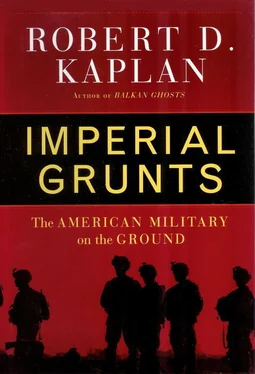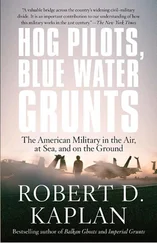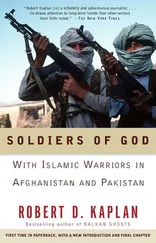Two weeks later I happened to be in Aden, visiting the Prince of Wales Pier, a somber, gray, churchlike edifice that the British had built in 1919, at the start of their last phase of High Empire. Here, in the heart of “Steamer Point,” from where British rule over Aden and its hinterlands had emanated, was an off-limits construction site, the spot that Bob Innes had chosen for the headquarters of his new Yemeni coast guard.
———
The month before I had come to Yemen, on November 3, 2002, a missile fired from an unmanned CIA Predator aircraft had incinerated a vehicle in which a suspected al-Qaeda leader, Abu Ali al-Harithi, was traveling along with five others in the Ma’rib region east of Sana’a. Since then, foreigners—Americans especially—had been denied permission by their embassies to enter the area, for their own safety. My plan was to pass through the northern, al-Qaeda–strewn badlands of al-Jawf and Ma’rib en route to the Wadi Hadhramaut, four hundred miles to the east, and then head south to the Arabian Sea where al-Qaeda was also active. I wanted a visual sense of the socioeconomic stew in which al-Qaeda flourished.
Leaving Sana’a, I and Abdullah, the driver whom Sheikh Murshed had found for me, entered a horrid maze of sandstone and black lava escarpments, buttes, and mesas that formed steep, wind-chiseled canyons. The canyons quickly emptied into an ashen wasteland speckled with ruins identified with the biblical kingdom of Sheba. An hour after leaving Sana’a, we pulled over by a roadside market to buy ghat for the afternoon chew.
Immediately I was amid filthy cinder-block storefronts, crowded like an inner city with young men in dirty white thobes, old keffiyahs and blazers, and armed with jambiyas, bandoleers, and Kalashnikov assault rifles. It was like a John Wayne western, except that the men were wearing skirts. A young boy pulled out his jambiya and pointed it at my face, laughing manically as he did so. Blunt and difficult to remove from their sheaths, jambiyas are rather impractical as a ready weapon, and more often than not represent the stabilizing influence of tribal custom: the Yemeni social glue that kept down the rate of random crime. The AK-47s were another matter. “Once you have a gun, why bother to learn to read and write,” the Yemeni soldier whom Abdullah had picked up interjected, after I had asked a particularly hostile knot of young men if they attended school. They didn’t.
Estimates for the number of firearms in Yemen went as high as eighty million, four for every Yemeni. The U.S. intelligence community speculated at the time that Yemenis had more assault rifles and grenades per capita than any other nation in the world. The small arms threatened to raise Yemen’s age-old tradition of quaint tribal wars to a debilitating level of anarchy.
Between Sana’a and Ma’rib, a distance of 125 miles, I counted eleven military checkpoints signaled by oil drums filled with sand and cement. The government presence in this desert was greater than ever before, and that was no small achievement. The soldiers at these checkpoints were neither drunk nor vicious like the kind I had experienced in Sierra Leone, or like the lizard-eyed mafiosi I had seen in former Soviet Georgia. Yemen was not a failed state. It was just a somewhat weak one, like so many others around the world. That’s what made the canvas which continued to unroll before my eyes so daunting.
The Global War on Terrorism—or GWOT, as the U.S. military called it—represented merely the current phase of American imperialism. But terrorism was both a cause and a symptom of the political weakness of states like Yemen. So, in a sense, the U.S. was fighting the unwieldy process of modernization itself.
The military checkpoints were freelance enterprises, where underpaid soldiers charged a few thousand riyals ($20) to jump in the car with a foreigner and protect him until the next checkpoint or two. Officially, the main road between Sana’a and Ma’rib was in government hands. But between one checkpoint and the next—indeed, two hundred yards away from any of the checkpoints—anything could happen. Mudbrick battlements visible from the road hid the encampments of rebellious tribal sheikhs, some with their own artillery pieces. The crowded markets selling guns and ghat multiplied as we skirted the region of al-Jawf (“The Depression”), an especially lawless region plagued by a continuum of mysterious bombings and tribal firefights.
We pulled into a roadside café—a few broken tables and chairs set on a corroded wooden pallet. Two Toyota pickup trucks stormed in, filled with rowdy young men in their early teens, most with bad teeth, pockmarked complexions, and broken fingernails. Every one of them had an AK-47, often with the safety latch off. Older men, also armed, were the drivers. The lone soldier accompanying us sat morosely sipping his tea, as though trying to hide. The fact that Yemen had among the lowest per capita income and highest population growth rate in the world was for me no longer a statistical abstraction. 4
The sheikhs who controlled these young men were often wealthy: from highway robbery, the sale of guns and other cross-border contraband, and bribes offered by both the Yemeni government and Saudi Wahabis. With the money the sheikhs bought sheep and camels, and more guns and ammunition; they didn’t build schools and women’s health clinics. It was a conscious choice, not a matter of poverty. I thought of warriors straight out of the Iliad, armed with cell phones and other information-age paraphernalia.
To counter this trend, the U.S. Embassy in Sana’a was overseeing a foreign aid program in the Ma’rib region that included the building of schools and a hospital. But the general instability this close to the capital, plus the heightened tension following the CIA’s Predator attack, made it a difficult choice whether or not to expose civilian aid workers to kidnapping and worse. (To wit, the U.S. Embassy was a sealed-off fortress, with multiple gates, two-way mirrors, and iron teeth coming out of the ground to block vehicles. Most of the diplomatic staff were males without dependents.)
Given these facts, it was left to the military assistance team from CENTCOM to provide the liberal humanist alternative. The money for military assistance that wasn’t going to Bob Innes’s coast guard, or to bribe Ali Muhsen into supporting his half brother’s new alliance with the Americans, was being spent on the training of Yemeni elite units. Nobody expected President Saleh to take control of these desert tracks east and north of the capital. However, the U.S. did hope that better-trained Yemeni commandos would eventually be able to project power at will, facilitating the introduction of civilian aid workers.
It was a Hobbesian state of affairs. Thomas Hobbes, the English philosopher, was by seventeenth-century standards a modernizer, because he believed that the breakdown of the medieval order, through the establishment of a central governing authority, was necessary for liberal progress. In Yemen the soldier took precedence over the aid worker because it was only the soldier who could provide the elemental security, without which there could be no central authority in the first place.
Leaving al-Jawf for Ma’rib, we now had two armed guards riding with us, along with an escort of soldiers in a separate truck that we had picked up at the latest roadblock.
Ma’rib, described by the Elder Pliny in his Natural History as a town six miles in circumference, had been the capital of biblical Sheba. It was now a gridwork of dusty streets littered with wrapping paper and discarded bottles. The ratty storefronts rested on high cinderblocks, smelling of oil and petrol combined with choking gray dust. Except for a flock of women clad from head to toe in black, the whole place had the atmosphere of a male dormitory. Given the recent Predator attack, I was told to tell people that “I was Australian.”
Читать дальше












